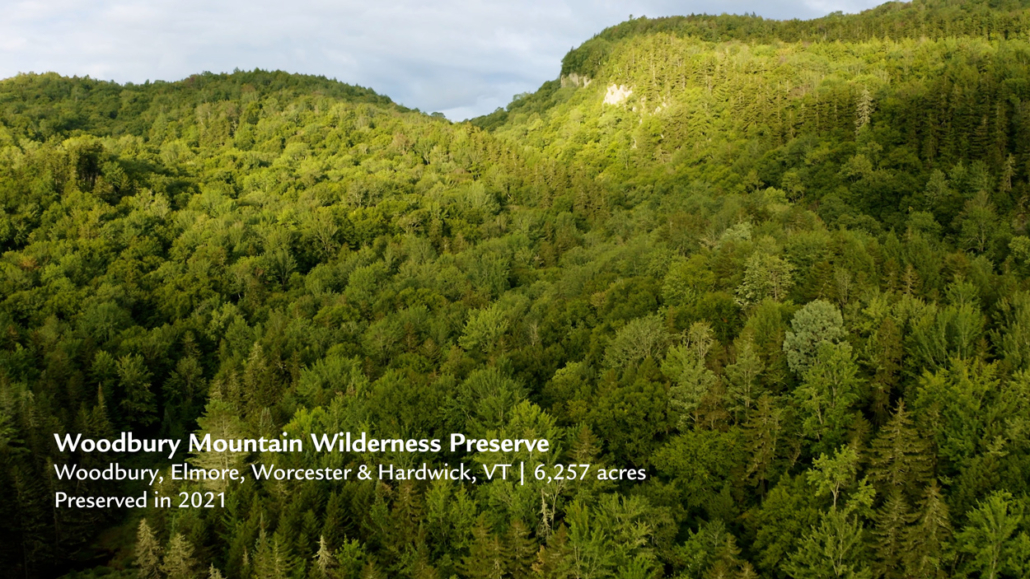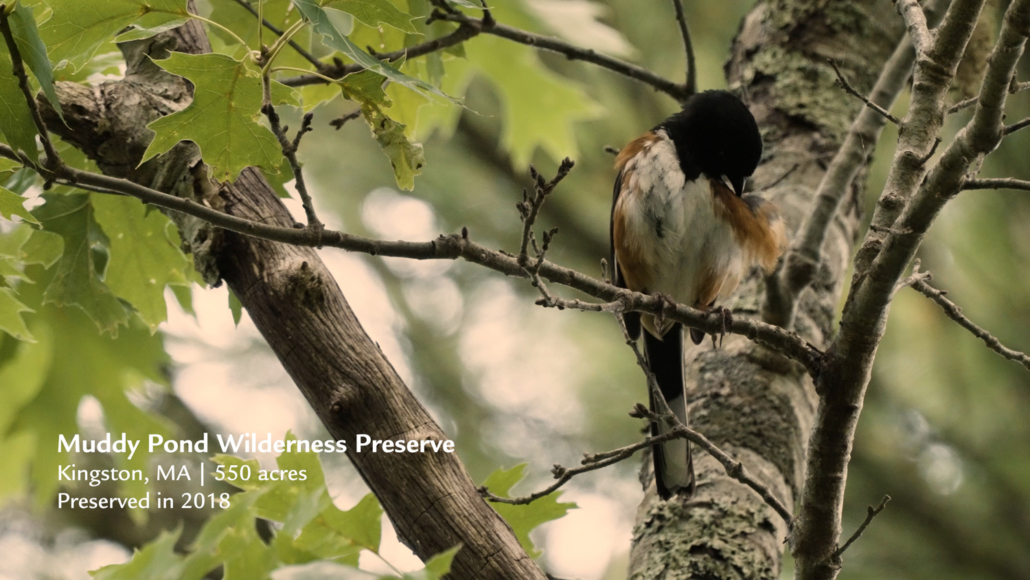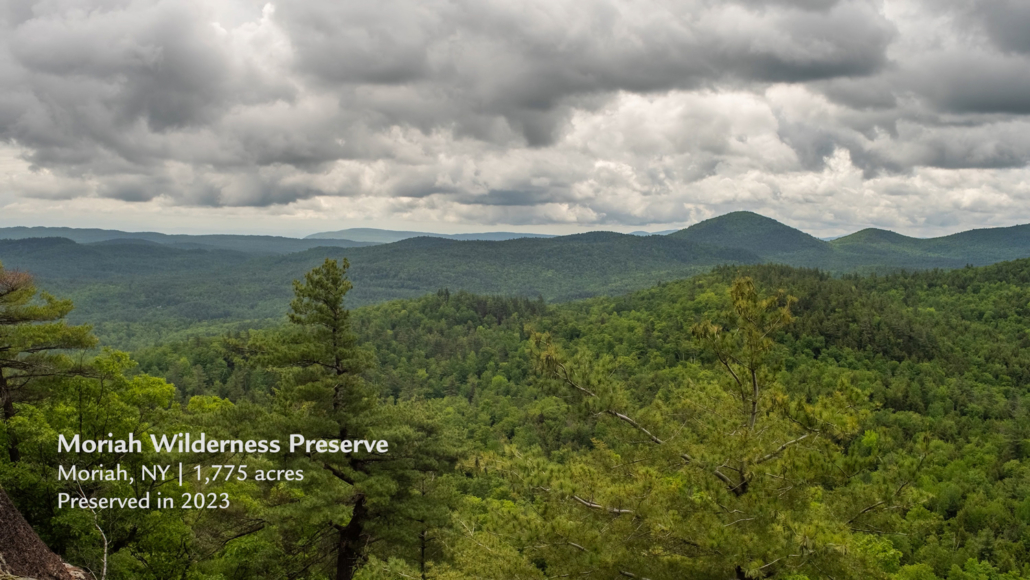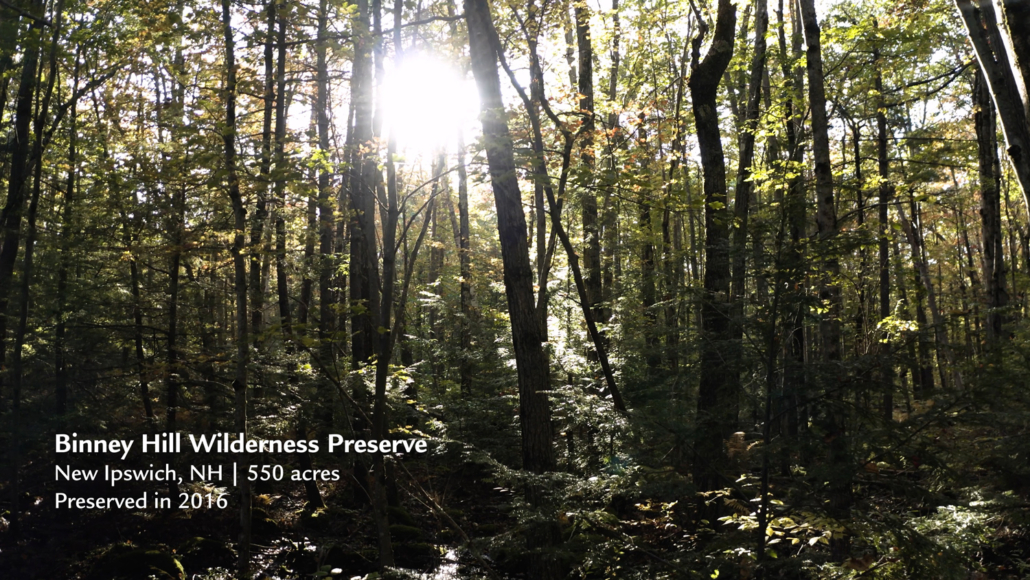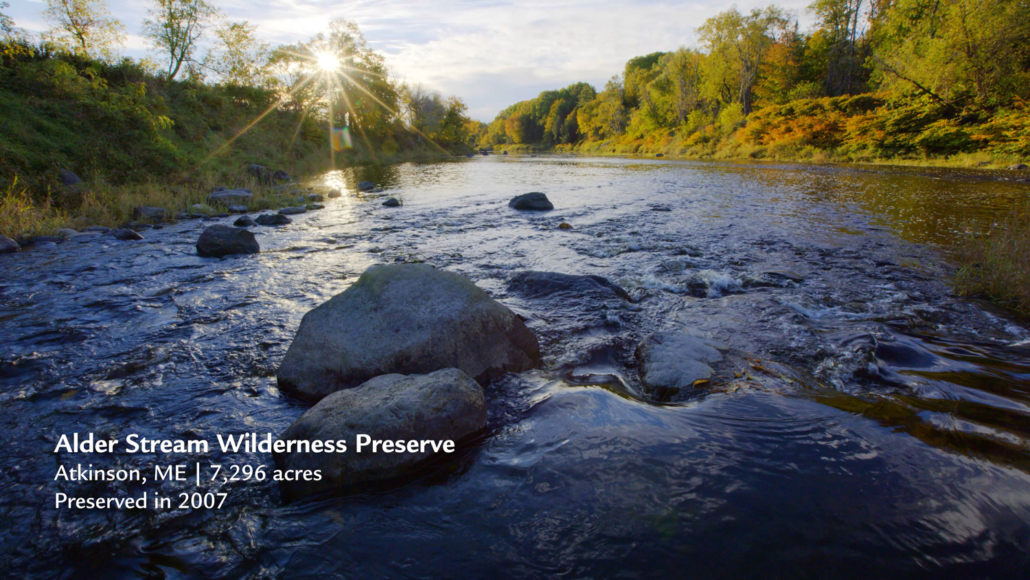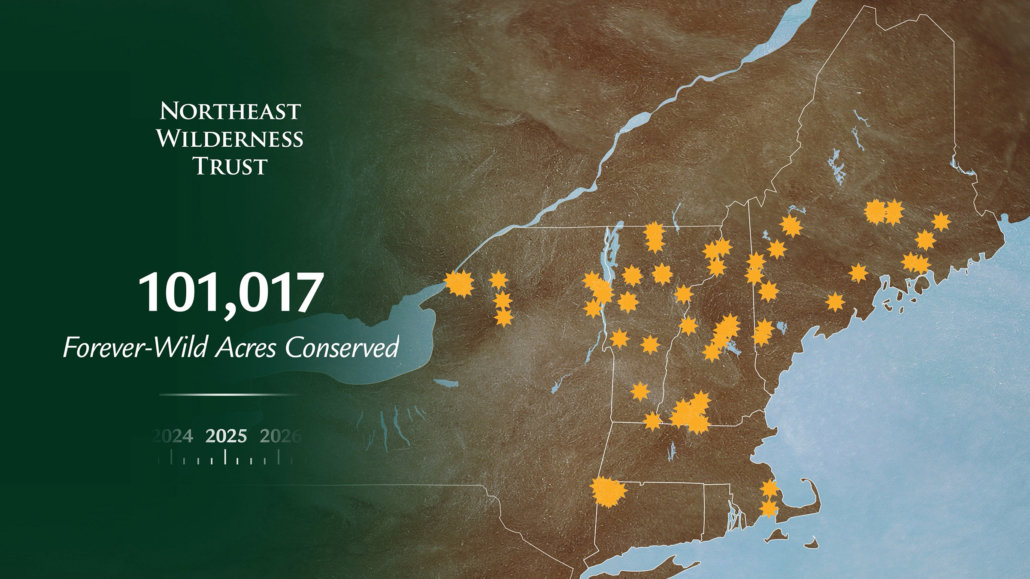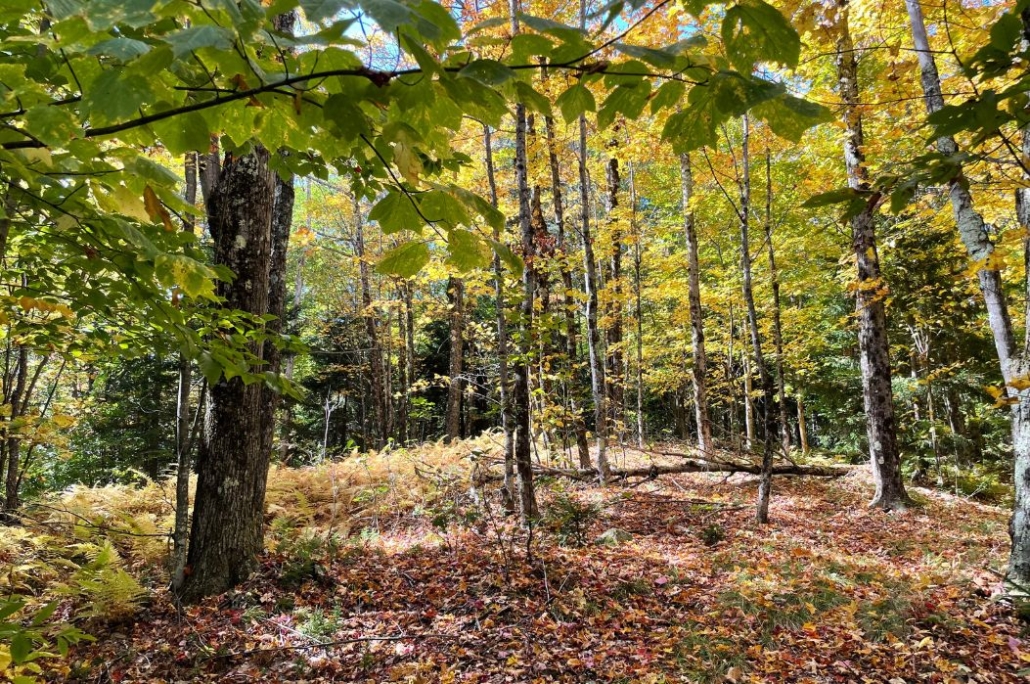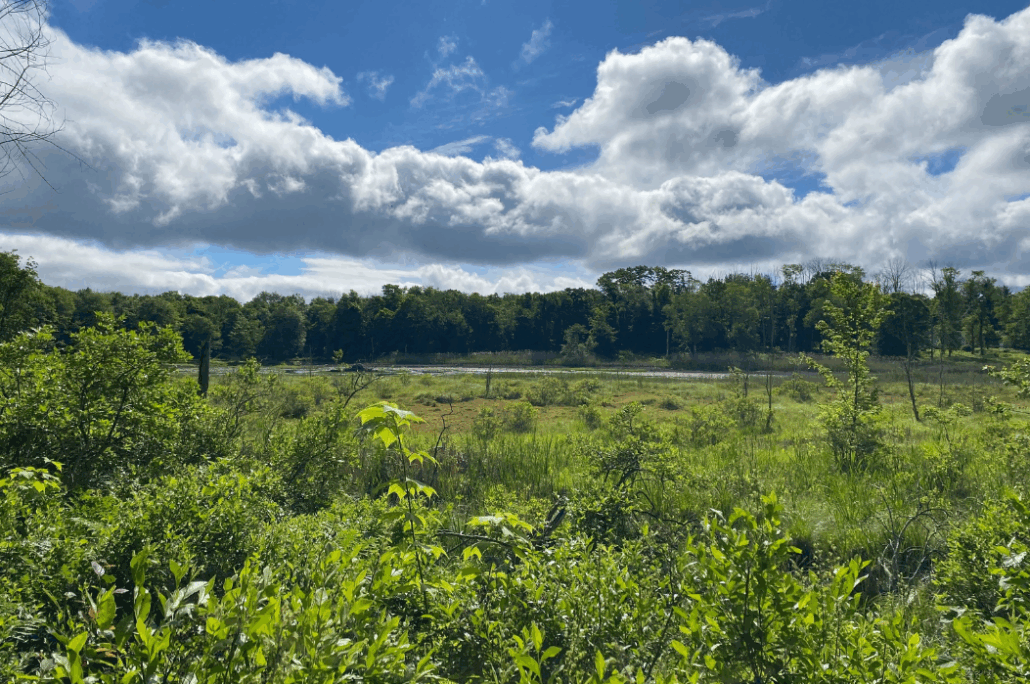Northeast Wilderness Trust Surpasses 100,000 Forever-Wild Acres Conserved
Organization Celebrates Landmark Achievement in Rewilding and Land Conservation Across the Northeast
MONTPELIER, VT —Northeast Wilderness Trust, the only regional land trust dedicated exclusively to wilderness conservation in New England and northern New York, has reached a major milestone: more than 100,000 acres of land permanently protected.
This achievement represents more than two Acadia National Parks’ worth of forests, lakes, and rivers where Nature can thrive in freedom. These “wildlands”—stretching from the Berkshires of northwestern Connecticut to the North Woods of Maine—are now safeguarded as places where ecosystems can flourish, wildlife can roam, and future generations can experience the power and solace of wilderness. The Trust’s more passive management approach, known as “rewilding,” sets the stage for missing species to return and natural processes to guide the ebb and flow of life, as has happened for millions of years. Human visitors can enjoy quiet, non-motorized recreation, witnessing firsthand the community of life in untrammeled beauty.
“This milestone is less a triumph for Northeast Wilderness Trust than it is for the four-legged, the finned, the feathered, and the rooted, whose homes we work to preserve,” said Jon Leibowitz, President and CEO of Northeast Wilderness Trust. “Every single acre—from recovering forests in northern New York to the tidal streams of coastal Maine—is a permanent step toward a healthier, more resilient future. Most hopeful of all, each acre protected as wilderness today is an old-growth forest of tomorrow in a region where such forests are vanishingly rare.”
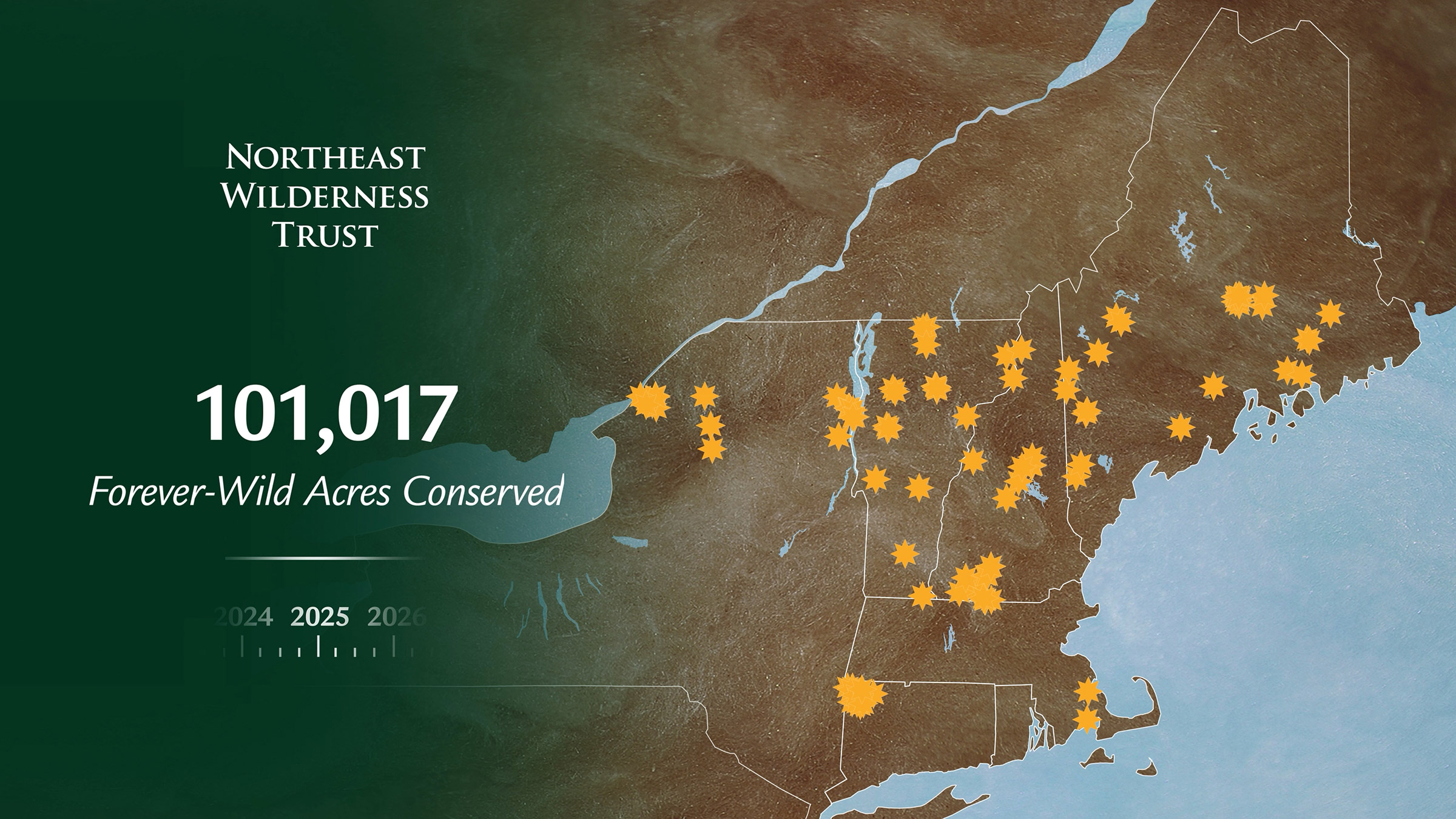
A Growing Recognition of the Value of Wilderness
Wilderness has long been a neglected conservation element in the Northeast. Whereas approximately 25 percent of the region has been conserved in some form, the lion’s share of that conserved land is managed or farmed, while only about 3.5 percent is protected as wilderness. The consequences of this disparity have become more pronounced in recent years, as a growing body of research has confirmed that wildlands store immense amounts of carbon and boost both biodiversity and human well-being. Luckily, stakeholders in the private and public sectors are now taking initial steps to elevate wilderness and rewilding in conservation strategies. The Wilderness Trust’s own history mirrors this evolution, with remarkable growth over the past seven years: expanding from a staff of three to 24 across four states and increasing its protected land by 75,000 forever-wild acres.
Key projects that brought the Wilderness Trust over the 100,000-acre threshold include College Hill Wilderness Sanctuary in southern Vermont, which conserves hundreds of acres of forest unlogged since the 1940s, and Birch Stream Wilderness Preserve in central Maine, which protects rare aquatic natural communities. These new wilderness areas join iconic ones in the Wilderness Trust’s holdings, such as Woodbury Mountain Wilderness Preserve, the largest nongovernmental wilderness area in the state of Vermont, and Muddy Pond Wilderness Preserve, a remnant of the globally rare Atlantic Coastal Pine Barrens ecosystem nestled in the densely populated suburbs of southeastern Massachusetts.
A focus of the Wilderness Trust’s efforts is the buffer zone of the Appalachian Trail. Because the Trail itself is protected from logging and development by the U.S. National Park Service, it is not only a famed recreational fixture of the eastern United States but also a continuous ribbon of wildlands and a crucial wildlife corridor stretching from Georgia to Maine. Over the past seven years, the Wilderness Trust has enhanced the wilderness character of the New England stretch of the Trail by protecting more than 16,000 acres adjacent to it—including its most recent conservation success, the 2,000-acre Spruce Ridge Wilderness Preserve in Orford, New Hampshire, which also brought the Wilderness Trust over the 100,000-acre threshold.
Partnerships with other conservation organizations have been central to the Wilderness Trust’s 100,000-acre milestone. Forever-wild conservation easements held by the Wilderness Trust on major wildlands such as the 10,000-acre Vickie Bunnell Preserve, owned by The Nature Conservancy in New Hampshire, and on roughly 800 acres in northwestern Connecticut owned by Cornwall Conservation Trust, represent nearly 45 percent of the organization’s protected lands. Building on this legacy of collaboration, the Wilderness Trust in 2021 launched the Wildlands Partnership grant program. The Partnership mainstreams wilderness conservation and rewilding by awarding technical and financial support to partner land trusts that safeguard more of their lands as forever-wild. To date, more than 15,000 of the Wilderness Trust’s 100,000 protected acres have been conserved through the Partnership.
Collectively, more than 100 uncommon, threatened, or endangered species have been documented on Wilderness Trust lands. Many of these species find ample habitat among the 16,000 acres of wetlands and 300 miles of rivers and streams included in the 100,000-acre total. Over 9 million metric tonnes of carbon—and counting—have been removed from the atmosphere by lands under Wilderness Trust ownership.


